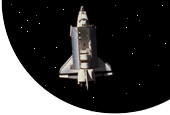Loading |
 |
|
||||||||||||||||||||||||||||||||||||||||||
| "Great Aerospace Disasters -Why We Seem to Keep Repeating Old Mistakes" Aside from the immediate tragic loss of life and valuable property, the saddest aspect of many famous aerospace disasters is how easy they were to understand in hindsight, how clear were the judgment errors that wrecked the projects. Concentrating on 'human error', Oberg discusses the causes and 'lessons learned' from the Apollo-1 fire, the Apollo-13 near-catastrophe, the Challenger disaster, and the near-fatal fire and collision aboard the Mir space station in 1997, all caused by misjudgments by engineers and program officials, and compares them to arguably avoidable aviation disasters such as the KAL-007 Korean airliner shootdown in 1983, the loss of 5 Navy 'Avenger' bombers off Florida in 1945, and the fatal crash of a Russian airliner carrying the president of Mozambique in 1987 - all caused, he explains, by pilot delusions about their real 'situational awareness'. His goal is to help develop a 'pre-hindsight' that allows aerospace workers to 'see the future as if the accident had already happened', and thus develop timely tactics to avoid catastrophe as often as 'humanly possible'. |
home | profile | articles | books | lectures | jim speaks | humor
links | email
Copyright 2010 James Oberg. All Rights Reserved
Site Designed and Maintained by YoeYo.com
